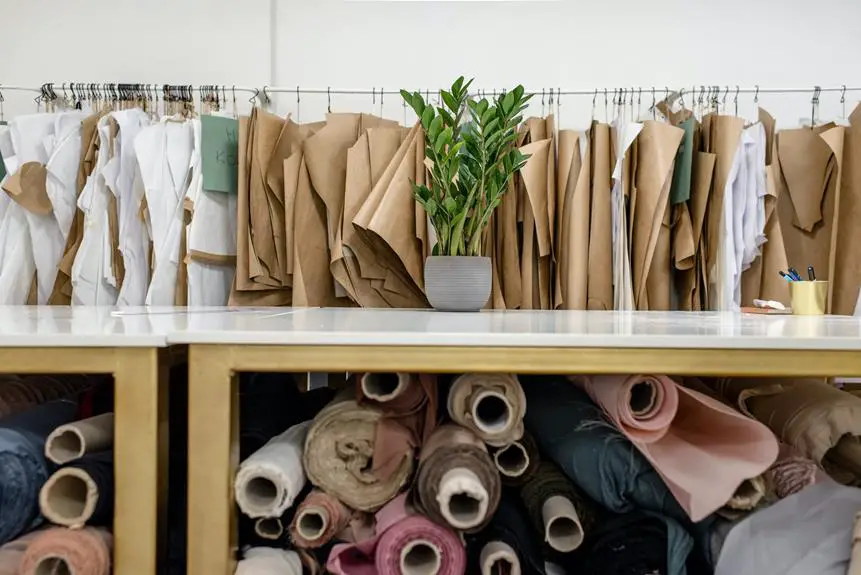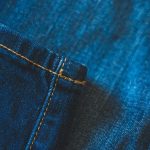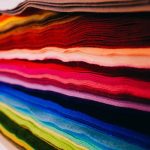When choosing between broadcloth and oxford fabrics, you'll want to consider the fact that they collectively account for a significant portion of men's dress shirts sold worldwide. Understanding the distinctions between these two popular options will help you make an informed decision based on your specific needs and preferences.
Both fabrics offer unique qualities in terms of fabric composition, weave structure, texture, durability, breathability, versatility, and care requirements. By examining these factors, you can determine which fabric aligns with your mastery of style and practicality.
Key Takeaways
- Broadcloth is a tightly woven plain weave fabric with a smooth and lustrous surface, while Oxford fabric is woven in a basketweave pattern and is heavier and more textured.
- Broadcloth is associated with high-end fashion and formal attire, while Oxford fabric is favored for more relaxed, casual garments.
- Broadcloth is known for its strength and longevity, resistant to wrinkles and wear and tear, while Oxford fabric excels in fabric breathability.
- Broadcloth offers a smooth and crisp feel, while Oxford fabric provides a more textured and sturdy feel.
Fabric Composition
When choosing between broadcloth and Oxford fabric, you should consider the fabric composition to determine which one suits your needs better. Broadcloth is typically made from a tightly woven plain weave fabric, often consisting of cotton or a cotton-polyester blend. This composition gives broadcloth a smooth, lustrous surface and a crisp, formal appearance.
On the other hand, Oxford fabric is woven in a basketweave pattern and is often made from pure cotton. This results in a heavier and more textured fabric compared to broadcloth.
In terms of fabric durability, broadcloth is known for its strength and longevity due to its tight weave, making it less prone to tearing or fraying. Oxford fabric, while also durable, may not withstand wear and tear as well as broadcloth due to its slightly looser weave.
However, Oxford fabric excels in fabric breathability. Its basketweave structure allows for better airflow, making it a great choice for warmer climates or for individuals who prioritize breathability in their clothing.
Considering fabric composition is crucial in determining the fabric's durability and breathability, which are essential factors when choosing between broadcloth and Oxford fabric.
Weave Structure
When comparing broadcloth and oxford, the weave structure plays a significant role in determining the fabric's characteristics. The type of weave affects the durability and breathability of the fabric, which are crucial factors to consider when choosing the right fabric for your needs.
Understanding the differences in weave structure between broadcloth and oxford will help you make an informed decision based on your preferences and intended use.
Broadcloth Vs Oxford Weave
You should choose the broadcloth weave if you prefer a smooth, tightly woven fabric with a lustrous finish. Broadcloth offers a more formal and elegant look, making it suitable for dress shirts and formal wear. In terms of weave structure, broadcloth has a higher thread count and is tightly woven, resulting in a sleek and luxurious texture.
On the other hand, Oxford weave, while durable and textured, has a more casual appearance due to its basketweave pattern. Historically, broadcloth has been associated with high-end fashion and formal attire, while Oxford fabric has been favored for more relaxed, casual garments. However, fashion trends have evolved, and both weaves are now used in various styles, catering to different preferences and occasions.
Understanding the weave structure of broadcloth versus Oxford helps you make informed decisions when selecting fabrics for different purposes.
Durability and Breathability
For a detailed comparison between broadcloth and Oxford fabrics regarding durability and breathability, consider their weave structures.
Broadcloth is tightly woven with a simple over-one-under-one pattern, making it durable and resistant to wrinkles.
On the other hand, Oxford fabric is woven in a basketweave pattern, creating a slightly thicker and more textured material that enhances its durability.
When it comes to breathability, broadcloth offers a lightweight and breathable option due to its tight weave, allowing air to pass through easily.
Oxford fabric, while still breathable, provides a bit more insulation due to its slightly thicker weave.
Ultimately, the durability comparison and breathability benefits of both fabrics make them suitable for different purposes, depending on the specific requirements of the garment or project.
Texture and Feel
When choosing between broadcloth and Oxford fabric, it's important to consider the texture and feel of each.
Broadcloth offers a smooth, crisp feel that's ideal for formal occasions.
On the other hand, Oxford fabric provides a more textured and sturdy feel, making it a great choice for casual wear.
Understanding the distinct texture and feel of each fabric will help you make the best decision for your specific needs.
Broadcloth Smooth, Oxford Textured
Experiencing the texture and feel of broadcloth and Oxford fabric allows you to understand their distinct characteristics.
- Broadcloth:
- Smooth texture
- Fine weave
- Lightweight
- Ideal for formal occasions
- Excellent wrinkle resistance
Broadcloth fabric has a smooth, almost silky texture due to its fine weave, making it feel luxurious against the skin. Its lightweight nature adds to the comfort, making it suitable for various climates. Additionally, broadcloth's impressive wrinkle resistance ensures a neat, polished look even after extended wear.
- Oxford:
- Textured feel
- Heavier weight
- Casual yet versatile
- More relaxed drape
- Can be more prone to wrinkles
Oxford fabric, on the other hand, offers a textured feel with a heavier weight, providing a more casual yet versatile option. Its relaxed drape adds to its charm, but it may require a little more attention to prevent wrinkles.
Broadcloth Crisp, Oxford Sturdy
Broadcloth's crispness and Oxford's sturdiness define the distinct texture and feel of these fabrics, influencing their suitability for different occasions and preferences.
Broadcloth's crisp texture gives it a smooth, lustrous finish, making it versatile for both formal and casual wear. It drapes well and holds creases, adding a polished look to shirts and suits.
In contrast, Oxford's sturdy texture provides a thicker, more textured feel, lending itself to casual and rugged styles. Its basket-weave structure creates a durable and resilient fabric, suitable for button-down shirts and casual jackets.
Understanding the differences in texture and feel between broadcloth and Oxford allows you to choose the fabric that best aligns with your desired style and occasion, whether it's the versatility of broadcloth or the textured sturdiness of Oxford.
Broadcloth Formal, Oxford Casual
To understand the difference in texture and feel between broadcloth and Oxford, consider their respective formal and casual characteristics.
- Broadcloth, commonly used in weddings and formal settings, offers a smooth, lustrous texture that exudes elegance.
- The fine weave of broadcloth results in a soft, luxurious touch, making it well-suited for formal events and professional settings.
In contrast, Oxford, often chosen for everyday wear, has a slightly heavier and coarser feel, providing a more casual and relaxed appearance.
- Oxford fabric, with its slightly thicker and more substantial construction, lends itself to a more versatile, everyday comfort.
Whether you opt for the refined finesse of broadcloth for formal occasions or the relaxed comfort of Oxford for daily wear, both fabrics offer their own distinct textures and feels tailored to their specific purposes.
Durability and Longevity
You can expect a higher level of durability and longevity from broadcloth compared to oxford fabric. Broadcloth is tightly woven with a simple over-one-under-one weave pattern, making it more resistant to wear and tear compared to the looser weave of oxford fabric. The durability comparison between the two fabrics reveals that broadcloth is less prone to fraying and is better at maintaining its structure over time. This makes broadcloth shirts ideal for frequent wear and long-term use, providing longevity benefits that make them a worthwhile investment for your wardrobe.
In addition to the durability advantage, broadcloth also tends to hold its color well over time, maintaining a fresh and crisp appearance even after multiple washes. This is an important factor when considering the longevity of your clothing. Oxford fabric, while still durable in its own right, may not hold up as well as broadcloth in terms of maintaining its original color and structure after extended use.
When it comes to durability and longevity, broadcloth emerges as the superior choice, offering a reliable and long-lasting option for your clothing needs.
Breathability and Comfort
If you're looking for a fabric that offers breathability and comfort, broadcloth and oxford have distinct characteristics that can impact your overall wearing experience. Both fabrics have their own unique properties that affect how breathable and comfortable they're to wear. Here's a comparison to help you understand how each fabric fares in terms of breathability and comfort:
- Breathability: Broadcloth is typically more breathable than oxford due to its lighter and finer weave, allowing for better air circulation. Oxford, on the other hand, has a slightly denser weave, which may reduce breathability compared to broadcloth.
- Fabric Weight: Broadcloth is lighter in weight, making it a suitable choice for warmer weather and providing a more comfortable wearing experience in hot climates. Oxford, being slightly heavier, may offer a bit more warmth but could feel less breathable in comparison.
- Comfort: Broadcloth's lightweight and breathable nature often make it feel more comfortable, especially during physical activities or in warm environments. Oxford, with its slightly heavier and more substantial feel, may provide a different level of comfort depending on personal preferences.
Understanding these differences can help you choose the fabric that best aligns with your preferences for breathability and comfort.
Versatility and Style
When considering versatility and style, the choice between broadcloth and oxford fabric can significantly impact the overall look and functionality of your wardrobe. Both fabrics have unique characteristics that lend themselves well to different fashion trends and personal styles. Understanding the versatility of each fabric will help you make informed decisions when curating your wardrobe.
| Versatility | Fashion Trends |
|---|---|
| Broadcloth | Versatile and adaptable to formal and casual wear. Well-suited for tailored shirts and classic office attire. |
| Oxford | Known for its casual charm and relaxed texture. Ideal for creating a smart-casual look and perfect for layered outfits. |
Broadcloth offers versatility, making it suitable for a wide range of occasions. Its smooth, lustrous finish and crisp drape make it an excellent choice for formal wear, while also allowing for a refined casual look. On the other hand, Oxford fabric's natural, textured appearance and durability lend themselves to a more relaxed and versatile style. Understanding the distinct characteristics of each fabric will enable you to make style choices that align with your personal preferences and current fashion trends.
Care and Maintenance
Proper care and maintenance of both broadcloth and Oxford fabric is essential to preserve their quality and longevity. Here are some care techniques to help you maintain these fabrics:
- Machine Wash: Both broadcloth and Oxford fabrics can generally be machine washed. Use a gentle cycle and cold water to prevent excessive fabric shrinkage.
- Drying: It's best to air dry these fabrics to minimize shrinkage and maintain their shape. If you must use a dryer, use a low heat setting.
- Ironing: When ironing, use a low to medium heat setting for broadcloth and a slightly higher heat setting for Oxford fabric. Avoid high heat to prevent fabric damage.
- Storage: Store these fabrics in a cool, dry place to prevent mildew. Avoid hanging them in direct sunlight for extended periods to prevent color fading.
- Professional Cleaning: For tough stains or when in doubt, consult a professional cleaner who's experienced in handling delicate fabrics.
Price and Value
To assess each fabric's price and value, consider your budget and the durability you require. When comparing broadcloth and Oxford fabric, price comparison and quality assessment are essential. Broadcloth is typically more expensive than Oxford, but it offers a finer weave and a smoother, silkier texture. On the other hand, Oxford fabric is more affordable and provides a more casual, textured appearance. To help you make an informed decision, here's a comparison of the price and value of these two fabrics:
| Broadcloth | Oxford | |
|---|---|---|
| Price | Higher | Lower |
| Durability | Moderate | High |
| Texture | Smooth, silky | Textured, casual |
| Formality | More formal | Less formal |
| Versatility | Dress shirts, formal wear | Casual shirts, versatile |
Ultimately, the choice between broadcloth and Oxford fabric depends on your individual needs and preferences. If you prioritize a more formal, smooth texture and are willing to invest in higher-priced fabric, broadcloth may be the better option for you. However, if you are looking for a more affordable, versatile fabric with a casual texture, Oxford fabric could be the ideal choice for your wardrobe.
Frequently Asked Questions
Can Broadcloth or Oxford Fabric Be Used for Making Formal Wear Like Dress Shirts and Suits?
Yes, broadcloth and Oxford fabric can both be used for making formal wear like dress shirts and suits. When comparing the two fabrics, consider factors such as weave, texture, and weight to determine which is best for your desired formal attire.
Are There Any Specific Care Instructions for Maintaining the Quality of Broadcloth or Oxford Fabric?
To maintain the quality of broadcloth or Oxford fabric, follow these care instructions. For stain removal and washing techniques, use gentle detergents. When ironing, low to medium heat is best. Store in a cool, dry place to prevent wrinkles and preserve fabric integrity.
What Are the Environmental Impacts of Producing Broadcloth and Oxford Fabric?
When considering the environmental impact of broadcloth and Oxford fabric, it's crucial to assess their production process for sustainability and ethical implications. Understanding the resource usage and waste generated can guide informed choices.
Are There Any Specific Health Benefits or Drawbacks of Wearing Clothing Made From Broadcloth or Oxford Fabric?
When it comes to health benefits, both broadcloth and oxford fabrics offer breathability and comfort. However, broadcloth may provide a smoother feel against the skin, while oxford fabric could offer more durability.
Can Broadcloth or Oxford Fabric Be Used for Making Home Decor Items Like Curtains or Upholstery?
Yes, both broadcloth and oxford fabric can be used for making home decor items like curtains or upholstery. Broadcloth offers a wide range of color options, while oxford fabric provides excellent fabric durability for long-lasting home decor.
- Tetron Fabric for Marine Applications: Durability and Use Cases - June 18, 2025
- Tetron Fabric for Outdoor Furniture: Weather Resistance and Care - June 18, 2025
- Tetron Fabric for Wall Coverings: Style and Application Tips - June 18, 2025







